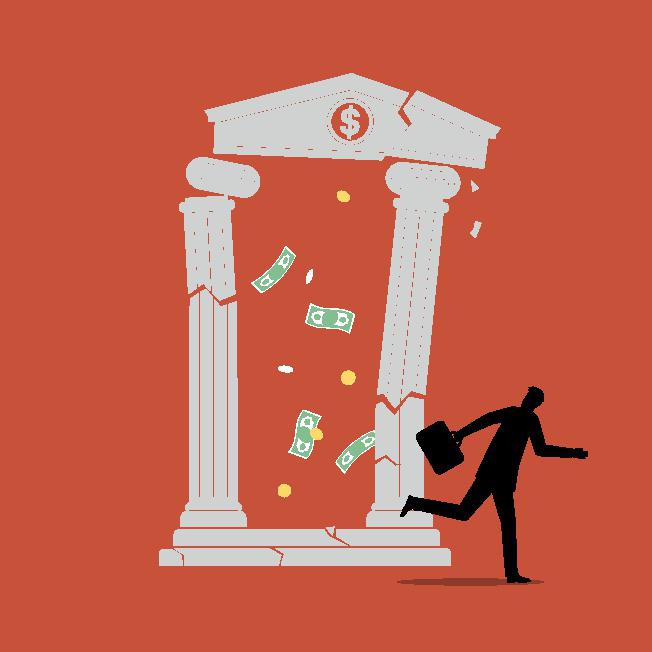Banking crises are notorious for starting small and looking isolated. At first, the Federal Reserve and the FDIC jump into action, using monetary resources to counter the “systematic” risk of widespread depositor withdrawals occurring elsewhere.
Unfortunately, though, those first few banks are rarely the main show. Instead, they are the forerunners – the ones at the leading edge of some risky growth strategy that has blown up. As the Fed, FDIC and Wall Street dig into those initial banks’ actions, an overriding fad or flaw usually emerges.
The Wall Street Journal article below describes the developmental timeline through May 1:
But the sirens don’t sound for the general public
With the discovery of a widespread infection, Wall Street jumps on the stocks, but the Fed and FDIC either continue reassuring depositors or become silent. After all, if they were to warn depositors that the problem is everywhere, they would turn systematic risk into reality.
However, reassurance or silence cannot stop the reality march. When people start seeing additional troubled banks in the media, their worry factor ramps up. Then, the big question hits: “What’s the problem?” Wall Street is ready with the answer that the media restates in easy-to-understand language – basically saying that bank managements screwed up.
Adding to the worry factor is the Fed’s and FDIC’s responses to the media question of “What are you going to do now?” After all, while providing a constrained $billion might seem constructively right, a bottomless-pit $trillion or more seems destructively wrong. But, then, not doing so means the banking industry will…?
The first easy solution eventually becomes unworkable
Remember when Bank of America
BAC
JPM
The wild card: Unethical behavior
The popular view of a bank manager is a financially conservative person focused on protecting depositors’ assets, making sound loans and investments, and ensuring ample liquidity. However, a banking crisis reveals unsavory behavior. A good example this time (so far) is First Republic’s apparent unethical activities as described in The Wall Street Journal article referenced above:
“… the free-fall in First Republic stock wiped out billions of dollars in shareholder wealth. The shares traded as high as $147 this year [Over $220 in December 2021] but closed Friday at $3.51.
“Insiders appear to have fared somewhat better. Top executives of First Republic Bank sold millions of dollars of company stock in the two months before the bank’s shares plummeted, the Journal reported. The firm also paid family members of its founder, James Herbert, millions of dollars for work at the lender in recent years, including for consulting services related to interest rates and risk. Those are facts that won’t sit well with many who saw their investments in the bank vaporized this spring.”
Are these actions illegal? Maybe. Unethical? You bet.
The bottom line – Calling the end of a banking crisis is very difficult
Banking activity is a crucial part of the financial system. Therefore, when a popular strategy is overdone, then upended, there is the need to take curative and defensive actions. In turn, other activities get a conservative adjustment. As a result, the economy can be adversely affected.
That combination of factors can produce a circular pattern of adjustments that eventually ends – sometime. The “when” is hard to forecast.
Read the full article here








